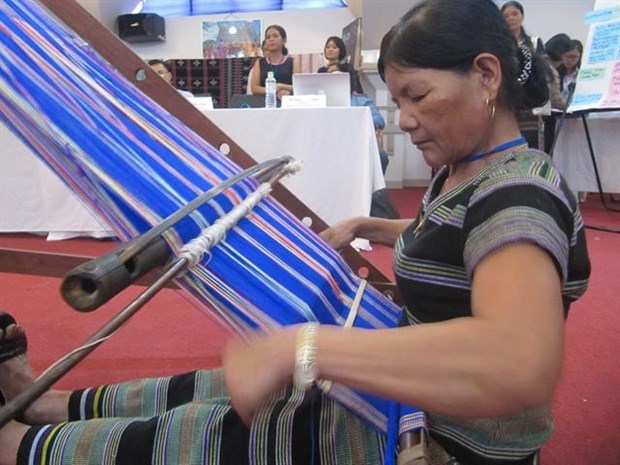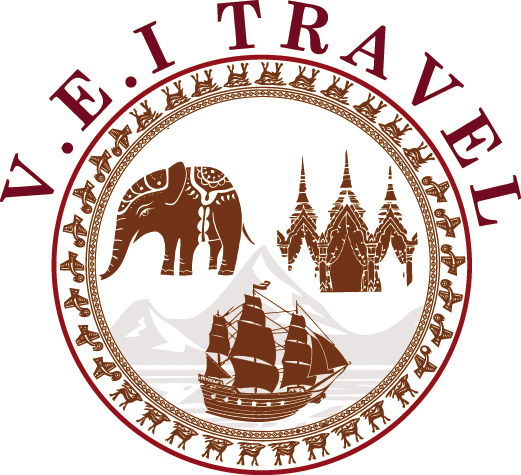
The network, which was supported by the Japanese non-governmental organisation Foundation for International Development/Relief (FIDR) and funded by the Japan International Co-operation Agency (JICA), helped link 17 weaving teams from seven ethnic groups including Xo Dang, Ba Na, Ta Oi, Co Tu and Ma from five provinces in Quang Nam, Thua Thien-Hue, Da Nang, Kon Tum and Dak Nong since 2001.
FIDR started working with Co Tu weaving group in Zo Ra village of Nam Giang district in the central province of Quang Nam 18 years ago before building a weaving house in 2004.
It’s also the first weaving co-operative established with 40 members and the group’s product had been exported to Australia.
Last year, the village’s product was selected as gift by the provincial People’s Committee for diplomats and visitors.
Nobuko Otsuki, FIDR’s representative in Vietnam, said over the past 10 years, she has recognised the beauty and uniqueness of brocade among the ethnic groups.
She said the project aims to help preserve the trade by recovering production through community-based tourism.
“We tried to introduce the trade and brocade community as new destinations to Japanese travel agencies,” Nobuko said.
“We received many orders from tourism companies in Japan seeking new products.
“Tourists will come to explore the beauty and skills of the traditional brocade and they would buy the unique products after understanding the value of the handicraft.”
She suggested the brocade villages should diversify products with more designs. Sumiko Iguchi, a tourist from Japan, spent five days learning how to weave from the Co Tu ethnic group in Hoa Bac commune, Da Nang city. Although she said she had weaved before in Japan, this style was new to Sumiko because of the different looms used.
“Here a loom is portable and easy. Craftsmen can carry loom to weave brocade everywhere. Co Tu community in Hoa Bac commune is so friendly and hospitable. I feel at home,” she said. “I know now how to make brocade with Co Tu material and loom, and I’ll bring home a loom. Many Japanese prefer to know more about traditional weaving.”
Some community-based tourism destinations were built at Ta Bhing commune; Bho Hoong and Dhroong villages, Ta Lu commune in Quang Nam province; Ta Lang village in Da Nang city in boosting the brocade trade. Products include scarves, mattress covers, wallets, table cloths and bags with unique patterns and natural dyes. Brocade weaving has been revived through tourism promotion among ethnic groups of Co Tu in Da Nang; A Dot village in Thua Thien-Hue, A Ting, La Ee and Cho Chun in Quang Nam; Dak Ro Wa in Dak Nong with more than 300 weavers. In 2017, Co Tu community in Zo Ra village earned more than 40,000 USD from tourism including sales of brocade and hand-made products./.
 Francais
Francais  Vietnamese
Vietnamese